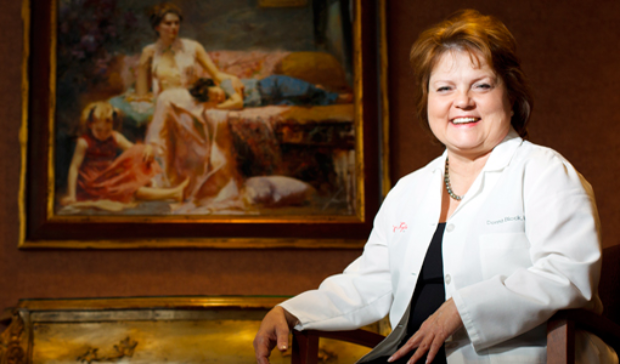There is an allure to country living. Rural residents revel in songbirds, vibrant night skies and a pace of life that rewards quiet and solitude. But like their urban brethren, when health issues arise country residents desire quality, accessibility and affordable care. Unfortunately, statistics show that compounding circumstances are giving rise to a crisis in rural health care.
A recent United Health Group study reveals that in remote areas of the United States, 18 percent of residents are now more than 65 years old, versus the 13 percent national average. Families in rural areas are disproportionately living below the federal poverty level, and people living outside of metropolitan areas have a higher rate of chronic illnesses (hypertension, diabetes, cancer and arthritis) induced, in part, by increased smoking and obesity. The grim picture? Rural residents in our country are older and sicker than urban residents.
These factors alone are enough to have a large impact on insurance coverage and availability in rural areas. To complicate matters, nearly one third of the older rural population is utilizing Medicare or Medicaid as its primary source of coverage versus one quarter of that population in urban areas. Rural Americans are more likely to be uninsured compared to city dwellers, and private insurance coverage rates in rural areas lag behind their counterparts in urban areas by 6 percent.
In sum, rural residents are older, sicker and less insured than their urban counterparts … and they have less access to health care. Consider that, in cities, there are 105 primary care physicians per 100,000 people. Compare that to 65 primary care physicians per 100,000 people in rural areas. Specialty care is particularly lacking for many people living in rural areas, as well as pharmacists, dentists, mental health professionals and well-trained EMS professionals. Between the isolation of working in a rural area, limited vacation time and fewer opportunities for spousal employment, recruiting physicians is a difficult task for many health care organizations in these regions.
This complexity is compounded by the fact that no two rural areas are alike. The topography, demographics and lifestyle among the rugged ranchlands of Wyoming are not comparable to those of the flat marshlands of Louisiana. Thus, there is no one-size-fits-all business model for administering rural health. And with the federal government’s recent legislation – the Patient Protection and Affordable Care Act, with much more debate to come – there is potential for significant impact on health care provider reimbursement, with arguably more impact on rural health care facilities, especially in the early days of implementation, since their patients are less likely, on average, to currently be insured and more likely to use Medicare and Medicaid.
In the midst of this environment, a majority of medical professionals opt for large, urban health care centers where the paycheck is stable and the impact of environmental factors are felt less on a personal level. According to the National Rural Health Care Association, only about 10 percent of physicians practice in rural America despite the fact that nearly 25 percent of the population lives in these areas.
Since 1972, in an effort to improve medical access in underserved areas, the National Health Service Corps, part of the U.S. Department of Health and Human Services, has worked to, if not eradicate, at least slowly close the gap between health care access in urban and rural areas. In return for a two-year commitment to serve in a Health Professional Shortage Area, the NHSC awards scholarships and loan repayment to primary care providers. Throughout the country, there are 2,157 HPSAs in rural and frontier areas. In Minnesota, 313 clinics or hospitals sites are located in these shortage areas and 11 of these are located in Clay County on the Minnesota/North Dakota border.
Fargo/Moorhead is the most populous area in the county and is home to Sanford Health, the largest, rural, nonprofit health care system in the country and the largest employer in North and South Dakota. With a presence in more than 111 communities in eight states (including 31 hospitals and 111 clinics and more than 900 physicians and 18,000 employees) Sanford Health is well-positioned to make a significant impact on the direction of rural health care.
A Rural View
The composition and reach of Sanford Health today is a result of a 2009 merger with MeritCare, formerly the largest health care provider in the state of North Dakota. Its service area spanned more than 200 miles, from Jamestown, N.D., to Bemidji, Minn. At the time of the merger, Dr. James Volk ’10 M.B.A. was an influential leader within MeritCare.
Early in his time there, Volk identified several measures to ensure rural patients were receiving the best possible care in a format that took into consideration some of the limitations of rural life, among them, distance. One of these measures was expanding the hospitalist services in the system. A hospitalist acts as transition coordinator and case manager of sorts and focuses on the care of patients in the hospital. Unlike primary care physicians who are housed in clinics, hospitalists are better able to coordinate the care of patients between the various specialists at the hospital, track patient results and communicate with families. They also are more cost effective and more convenient for rural patients than repeated visits to primary care physicians. Given these advantages, both to patients and to MeritCare, Volk expanded the hospitalist staff from two to 21.
Following the merger with Sanford Health, Volk assumed his new role as senior vice president of medical subspecialties and women’s health in the Fargo-Moorhead area. Volk has combined managerial and practitioner responsibilities throughout much of his career. His management role has solidified a key tenet of his professional life. In his words, “As physicians, we have a responsibility to take ownership and have accountability for the direction that health care takes in this country, and I think that we have shirked that for some time.”
He acknowledged that active participation is no easy task for rural physicians, whose workload has increased significantly in recent years. One solution to providing adequate care in rural areas has been to hire more advanced practice providers, predominantly physicians’ assistants and nurse practitioners. This has alleviated some of the shortage of medical practitioners in rural areas and is a favorable change for rural patients; however, with the hiring of advanced practice providers, physicians become responsible for their management, in addition to seeing patients themselves.
Another excellent trend for providing good care for rural patients is telemedicine, where physicians assist patients remotely. Although a great boon to rural patients, expecting physicians to email and teleconsult while still seeing a full load of patients in person has increased the demands placed upon physicians. Notwithstanding these trends, Volk maintains that physicians can and ought to be engaged. He suggests they do so by attending department meetings, having a voice in the political process and in other ways helping to direct the industry.
Yet that goal is encumbered by the realities of providing care in rural areas. When asked why he continues to practice rural health care management instead of moving to a system in an urban area with more resources and easier physician recruiting, Volk states that he knows well the challenges of providing care in rural areas. Thanks to his upbringing on a farm in North Dakota and his lengthy professional experience in rural areas, he understands what it is like to travel long distances to reach tertiary care centers, often requiring patients to take an entire day off of work. In these cases, some patients are forced to decide if they want to travel that distance at tremendous time and monetary expense or if they prefer to live with the health issues.
One of Volk’s missions at Sanford is to provide as much local care as possible to ease the financial and travel burdens on rural patients and to remove barriers that prevent people from seeking any care at all. This mission becomes a balancing act between the needs of the patients and the cost of providing these services locally.
For example, in previous years, Sanford Health provided “outreach” cardiology services to Bemidji, Minn. Once a month, a cardiologist would visit Bemidji and see all the patients he or she could on that day. After accruing enough data to determine there was sustainable, significant patient demand, Volk worked with the clinic and hospital in Bemidji to recruit a full-time, local cardiologist, thus removing the need for outreach services.
However, the physician is only part of the resource allocation. This newly hired cardiologist and his patients had to travel 140 miles one way to Fargo, N.D., once a week for cardiac catheterizations because there was no equipment for that procedure in Bemidji. With an equipment upgrade in October of last year, the cardiologist was able to provide cardiac catheterizations in Bemidji, which is a tremendous benefit to people living in the rural areas surrounding the city. This business decision changes the procedure from a daylong venture to a quick, one-hour visit.
A Healthier Prognosis
In a perfect world, the quality of care one receives should not be dependent upon where a patient is seen and by whom. But this is not a perfect world and the health care industry is not a perfect industry. There are signs that the struggles of patients in rural areas are being taken seriously, however. Affordable Care Act funding will allow, for example, the NHSC to triple in size, supporting more than 10,000 providers working in underserved areas.
During the Rural Health Policy Institute in January 2012, Mary Wakefield, Ph.D., Health Resources and Services Administration administrator and former NRHA member, described HRSA projects and grant programs benefiting or with the potential to help improve rural health quality and access. She also called attention to a new $1.5 billion home visiting program where nurses and social workers will provide health education in the homes of families in rural areas, perhaps minimizing some of the risk factors that contribute to the poorer health of rural America.
And in February 2012, Representative Cathy McMorris Rodgers (R-Wash.) and Representative Mike Thompson (D-Calif.), co-chairs of the Congressional Rural Health Coalition, introduced the Rural Hospital and Provider Equity (R-HOPE) Act. Its purpose is to help rural communities across America protect and expand access to quality health care. As one of the bill’s sponsors, Thompson summarized it this way: “The quality of health care you receive should not depend on whether you’re from a big city or small town … ensuring access to high quality, affordable health care isn’t a Republican priority or Democratic priority – it is a national priority.”
Read more from B. Magazine





